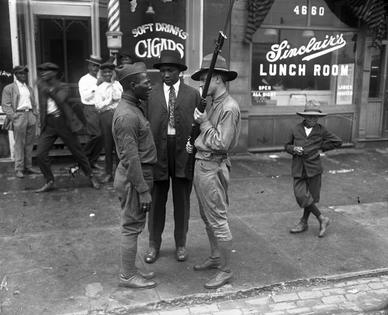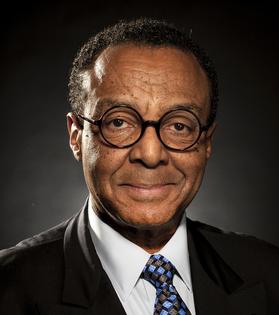Let’s Not Forget: Chicago Had a ‘Black Wall Street’ Too
Of the many lessons to be considered 100 years after a breathtakingly brutal race riot tore through Tulsa’s Greenwood district, one of the most painful is this: Tulsa wasn’t alone.
The two-day rampage came two years after the “Red Summer” of 1919 in which race riots and white supremacist terrorism tore through more than three dozen cities, including Chicago.
President Joe Biden and others paid tribute to the African American community of Greenwood, often called the “Black Wall Street” for its thriving prosperity in the then-segregated oil state.
That prosperity went up in smoke between May 31 and June 1, destroyed by angry white mobs killing, burning and looting through one of the worst eruptions of racist violence in this country’s history.
As many as 300 Black people and 50 white people are believed to have been killed, many disappearing into unmarked mass graves, and more than 1,250 homes were destroyed along with dozens of prosperous Black-owned businesses.
There also were the East St. Louis riots, a series of violent eruptions related to labor and racial unrest in which white Americans murdered between 40 and 250 African Americans in late May and early July 1917.
And before that there was the Atlanta riot of 1906, fueled by racial and economic tensions over the emergence of a local Black economic and political power.
But the “Red Summer” of 1919, a label coined by NAACP leader James Weldon Johnson, brought the Chicago riot, ignited by the death of 17-year-old Eugene Williams. On a raft, he inadvertently drifted over the invisible line that separated the Black and white sections of the 29th Street Beach. A white beachgoer threw rocks at him. He slipped off the raft and drowned.
Fueled by tensions over jobs, housing and a flu pandemic as troops of all races returned home from World War I, the incident ignited a riot that left 38 people — 23 Black, 15 white — dead, more than 350 injured and about 1,000 homes burned.
I bring all of these disasters up in the hope that we can learn something positive from them.
Chicago’s Timuel Black understands. The 103-year-old historian, educator, author and activist has offered generations of journalists, including me, valuable perspectives on how far we have come since the days of the “Black Belt,” as the Chicago Defender and other Black media called the Black South Side where he was born in August 1919, a month after the riot.
“But that (racial unrest) did not deter families — like my father and mother — from bringing us north for three principle reasons,” he recalled in an oral history for the University of Chicago. “To fight back if they were attacked, to be able to vote and to be able to have a better education for their children.”
In other words, they turned oppression into opportunity, as well as they could within the confines of racial segregation, much like the workers and business owners in Tulsa and other “Black Wall Streets” under Jim Crow segregation.
“Your father and mother may work outside” the community, he recalled, “but they would come back to spend whatever they could spend. So the dollar actually turned around in the Black Belt more than six times (on average). So we felt a sense of independence. It was just overcrowded. So we felt a sense of optimism in the community.”
Of course, I don’t want to sound too sanguine about the systemic racism they faced, which lingers today. The community was overcrowded because housing discrimination kept as much as a third of the city’s population, the Black third, confined to about a fifth of the land until recent decades, suppressing the accumulation of Black wealth.
Even as opportunities opened up, everyone knew they were starting the foot race from farther behind their white counterparts. Nevertheless, I am encouraged by the relentless optimism recalled by Black. “Though we lived in a period of the depression,” he observed, “we were not depressed.”
========
(E-mail Clarence Page at cpage@chicagotribune.com.)
©2021 Clarence Page. Distributed by Tribune Content Agency, LLC.
(c) 2021 CLARENCE PAGE DISTRIBUTED BY TRIBUNE MEDIA SERVICES, INC.










